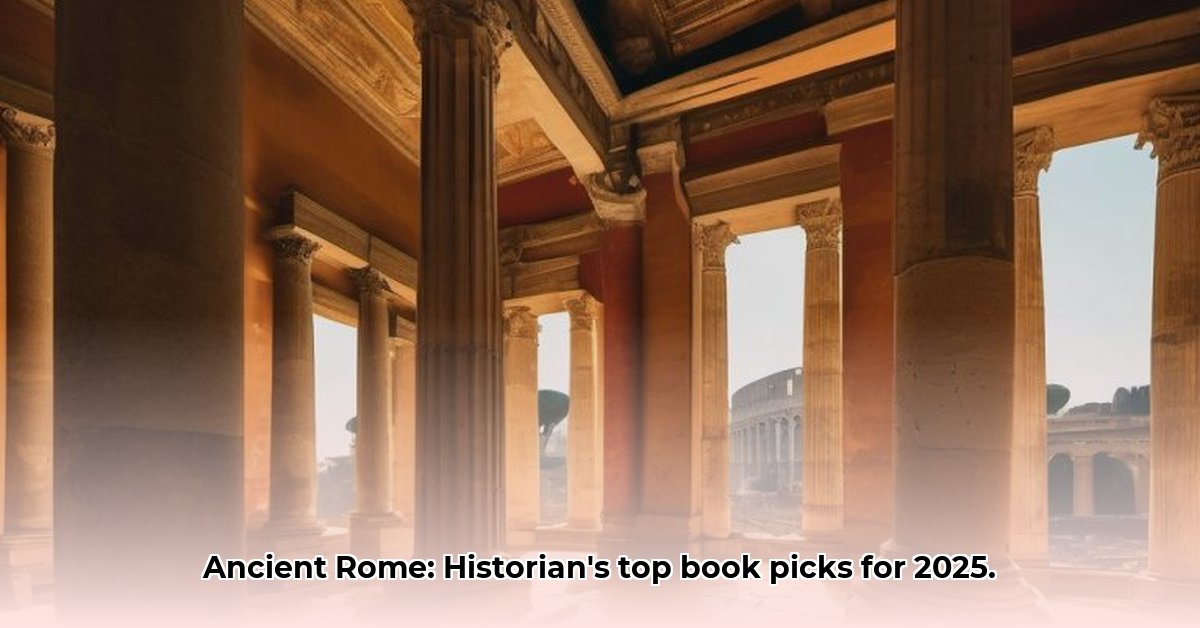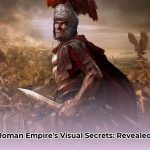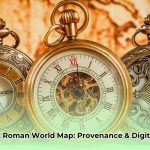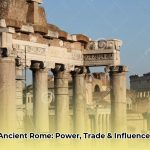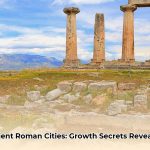The enduring allure of ancient Rome—from its humble origins as a Latin settlement to its vast imperial reach and eventual decline—continues to captivate modern minds. It offers profound insights into the mechanics of power, societal structures, economic complexities, and even the environmental challenges faced by civilizations throughout history. For those eager to delve into this monumental period, the sheer volume of literature can be daunting. Discover our curated “list of books for further reading.” As senior editors at a top-tier publication specializing in historical analysis, we’ve curated a premium selection of ancient Roman Empire books. This expertly chosen list aims to illuminate the multifaceted tapestry of Roman history, guiding readers through compelling biographies, insightful overviews, and detailed analyses of pivotal moments. Whether you seek to understand the dramatic lives of figures like Julius Caesar, Augustus, or the often-misunderstood Agrippina, or wish to grasp the intricate social and economic frameworks of Roman times, this guide is your definitive resource. Embrace this journey to comprehend one of history’s most impactful empires, and discover how its echoes resonate even today in our legal systems, linguistic heritage, and governmental structures.
Ancient Roman Empire Books: Top Historian Picks for 2025
Why does the narrative of the Roman world, with its triumphs and tragedies, continue to resonate centuries later? Perhaps it’s the undeniable echoes found in contemporary legal systems, linguistic heritage, and governmental structures that make its study so compelling. To truly comprehend such a vast and influential civilization, a multi-faceted approach is essential. A single volume, however comprehensive, cannot fully encapsulate the entire Roman experience. Therefore, a strategic selection of texts, encompassing broad overviews, intimate biographical portraits, and incisive analyses of defining events, is paramount for a nuanced understanding.
Getting the Big Picture: Foundational Overviews
Embarking on any significant historical inquiry requires a robust foundational understanding. For the Roman Empire, this means beginning with works that offer a sweeping historical narrative. Books such as SPQR: A History of Ancient Rome by Mary Beard serve as excellent starting points. Beard meticulously lays out the chronological progression, introduces key figures from Romulus to Constantine, and guides readers through major historical turning points with both scholarly rigor and engaging prose. Other pivotal works in this category include Tom Holland’s Rubicon: The Last Years of the Roman Republic, which dramatically captures the political turbulence leading to the Republic’s collapse, and Edward Gibbon’s monumental The History of the Decline and Fall of the Roman Empire, which, despite its eighteenth-century origin, remains a timeless classic for its grand scope and eloquent prose. These comprehensive approaches are crucial for understanding the intricate developments of Roman civilization, from its nascent beginnings to its imperial zenith.
Up Close and Personal: Biographical Deep Dives
To forge a genuine connection with the individuals who shaped Rome’s destiny, biographical works are indispensable. These provide intimate perspectives on the lives of emperors, influential politicians, and the powerful, often overlooked, women operating within the imperial apparatus. Suetonius’ The Twelve Caesars, for instance, offers scandalous yet insightful glimpses into the personalities and reigns of early emperors, making history strikingly human and revealing the often-unvarnished truths of imperial power struggles. Modern biographies focusing on figures like Augustus (Adrian Goldsworthy’s Augustus: First Emperor of Rome), Cicero (Anthony Everitt’s Cicero: The Life and Times of Rome’s Greatest Politician), or Agrippina the Younger (Emma Southon’s Agrippina: The Most Extraordinary Woman of the Roman World) reveal the ambitions, leadership styles, political machinations, and even the private struggles that defined their eras. Indeed, these narratives often underscore the pervasive nature of power struggles, dynastic maneuvering, and personal rivalries that shaped the trajectory of ancient Rome.
Moments That Mattered: Key Events Analyzed
A thorough grasp of Roman history necessitates a detailed examination of its defining moments, where the fate of the Republic or Empire hung in the balance. Texts that scrutinize specific turning points are vital. The tactical brilliance and immense stakes of power struggles are vividly portrayed in accounts of battles like Cannae (Adrian Goldsworthy’s Cannae: Hannibal’s Greatest Victory) or Actium (Barry Strauss’s The War That Made the Roman Empire: Antony, Cleopatra, and Octavian at Actium). These works not only detail military strategies but also explore the psychological and political impacts of such confrontations. Similarly, a close study of events such as Julius Caesar’s decisive crossing of the Rubicon, a point of no return that plunged Rome into civil war, or his subsequent assassination, which unleashed further decades of conflict, illuminates the intricate web of political intrigue, conspiracy, and personal betrayals that characterized the late Republic. These pivotal events dramatically altered the trajectory of Roman history, shaping its imperial ambitions and political landscape for centuries to come, laying the groundwork for the autocratic rule that followed.
More Than Just Battles: Society, Economy, and Environment
Roman history extends far beyond the exploits of emperors and legions. Understanding the daily lives of its citizens, its intricate economic systems, and the profound environmental factors that shaped Roman society offers a richer, more complete picture. Works like Daily Life in Ancient Rome: The People and the City at the Height of the Empire by Jerome Carcopino provide a window into the experiences of ordinary individuals, offering nuanced insights into social customs, urban living, and public infrastructure. Meanwhile, The Corrupting Sea: A History of the Mediterranean by Peregrine Horden and Nicholas Purcell explores the profound influence of the Mediterranean Sea on Rome’s growth, its trade networks, and its territorial expansion, highlighting how this vast body of water was both a conduit for prosperity and a source of vulnerability. Furthermore, The Fate of Rome: Climate, Disease, and the End of an Empire by Kyle Harper critically analyzes how environmental shifts, including climate fluctuation and pandemic diseases, contributed to the Empire’s eventual fragmentation and decline, offering a compelling, data-driven perspective often overlooked in traditional narratives. This critical interdisciplinary approach provides invaluable insights into the complex interplay between human society and the natural world, lessons strikingly relevant to our own era.
Stepping Into the Past: Historical Fiction and Graphic Novels
For those seeking an immersive, emotionally resonant experience, historical fiction and graphic novels offer compelling entry points into the Roman world, translating complex historical periods into accessible narratives. Robert Graves’ I, Claudius presents a captivating, albeit fictionalized, portrayal of life within the imperial court, filled with dynastic intrigue, power plays, and a unique first-person perspective on the Julio-Claudian emperors. Its compelling narrative makes the distant past feel startlingly immediate and personal. Similarly, graphic novels such as Jennifer A. Rea and Liz Clarke’s Perpetua’s Journey: Faith, Gender, and Power in the Roman Empire provide a unique, visual pathway to connect with Roman history, exploring themes of early Christianity and female agency through a compelling visual narrative. These formats are proving particularly effective for visual learners and newcomers to the subject, demonstrating that history can be both profoundly educational and deeply entertaining. This narrative versatility can significantly enhance engagement with the past, making it feel less like a dry academic exercise and more like a living, breathing saga.
Considering All Sides: Competing Perspectives
It is crucial to acknowledge that historical narratives are rarely monolithic. Diverse interpretations of events and personalities are common, reflecting the complexities of available evidence and the evolving methodologies of historical inquiry. For instance, the exact role of environmental factors in Rome’s decline remains a subject of considerable academic debate, with scholars weighing their importance against internal political strife, economic crises, and external barbarian pressures. Similarly, perspectives on figures like Agrippina the Younger vary widely: was she a calculating schemer, ruthlessly ambitious and dangerous, or a victim of a patriarchal system forced to navigate a precarious power landscape with limited options? Critical engagement with multiple viewpoints, including those from ancient Roman historians (e.g., Tacitus, Livy) and modern scholars (e.g., Mary Beard, Catherine Nixey’s provocative The Darkening Age), is essential to recognize how contemporary understandings of the past can be profoundly influenced by the perspectives of those who chronicle it, and to build a truly nuanced and robust historical comprehension.
Beyond the Books: Expanding Your Knowledge
Learning about Rome should not be confined solely to printed texts. A wealth of supplementary resources can deepen your comprehension and provide alternative avenues for engagement. Podcasts like Mike Duncan’s popular The History of Rome offer engaging, episodic discussions on various Roman topics, perfect for learning on the go. Documentaries from reputable sources, such as those by the BBC or PBS, provide visual narratives of historical events and archaeological discoveries, bringing ancient sites and artifacts to life. Moreover, visiting actual Roman historical sites, such as the majestically preserved Colosseum, the bustling ruins of Pompeii, or the awe-inspiring Roman Forum, provides a tangible connection to the past that no book can fully replicate. Walking in the footsteps of emperors and citizens offers a visceral understanding of scale, complexity, and daily life. Exploring these diverse media formats can offer fresh insights and enhance the overall learning experience, transforming abstract facts into a vivid historical reality.
Ancient Roman Empire Books: A Quick Guide
| Book Title | Type | Focus | Why Read It? |
|---|---|---|---|
| SPQR: A History of Ancient Rome by Mary Beard | Foundational Overview | Comprehensive Roman history (Republic to Empire) | Provides a foundational, engaging, and authoritative understanding of key events, figures, and concepts, essential for further exploration. Written by a leading scholar, it offers fresh perspectives on well-worn topics. |
| The Twelve Caesars by Suetonius (translated by Robert Graves) | Primary Source / Biography | Lives of early Roman emperors (Julius Caesar-Domitian) | Offers scandalous and insightful portraits of imperial personalities, making history remarkably relatable and engaging. Reveals the personal eccentricities and public power plays of Rome’s most famous rulers. |
| Rubicon: The Last Years of the Roman Republic by Tom Holland | Event Analysis / Narrative History | Late Roman Republic, transition to Empire | Compellingly covers the political intrigue, betrayal, and ambitions that led to the collapse of the Republic, focusing on figures like Caesar, Pompey, and Cicero. Its gripping narrative reads like a novel while adhering to historical fact. |
| The Fate of Rome: Climate, Disease, and the End of an Empire by Kyle Harper | Environmental History / Decline Analysis | Environmental and epidemiological factors in Rome’s decline | Critically analyzes how environmental shifts, including climate fluctuation and major disease outbreaks, contributed significantly to the Empire’s eventual fragmentation and decline, offering a unique and highly relevant perspective for contemporary challenges. |
| Daily Life in Ancient Rome by Jerome Carcopino | Social History | Everyday life in Imperial Rome | Provides vivid insights into the daily experiences of Roman citizens across various social classes, from senators to slaves. Explores urban planning, social customs, public health, and entertainment without idealizing the past. |
| I, Claudius by Robert Graves | Historical Fiction | Imperial life (Julio-Claudian dynasty) | Offers a gripping, though fictionalized, account of Roman emperors and court intrigue through the eyes of Claudius. Provides a deeply immersive and character-driven experience of imperial power, madness, and survival. |
| Agrippina: The Most Extraordinary Woman of the Roman World by Emma Southon | Biography / Gender History | Life and influence of Agrippina the Younger | Profiles a powerful and often maligned Roman woman, exploring her ambitions and shrewd political savvy within a patriarchal system. Challenges traditional narratives and offers a nuanced understanding of female power in ancient Rome. |
Ultimately, a profound understanding of Rome necessitates both intellectual curiosity and a willingness to explore various academic and narrative avenues. By thoughtfully integrating diverse sources and perspectives, you can construct a robust and informed view of this captivating period. Pick up one of these ancient Roman Empire books today and commence your profound historical adventure.
How to Study Roman History
Key Takeaways for Effective Study:
- Begin with authoritative overviews, such as Mary Beard’s SPQR: A History of Ancient Rome, for a comprehensive foundational understanding of the chronological narrative and key developments.
- Engage deeply with biographical works, like Adrian Goldsworthy’s Caesar: Life of a Colossus, to humanize Roman historical figures and understand their individual impacts on broader history.
- Employ rigorous critical analysis when evaluating historical sources, identifying potential biases, underlying agendas, and the socio-political contexts in which they were created.
- Actively seek out and incorporate diverse historical perspectives, including modern scholarship that challenges conventional narratives and offers new interpretations.
- Utilize a variety of learning resources beyond traditional books, including archaeological sites, reputable museums, academic publications, documentaries, and even well-researched creative works, for a multifaceted approach.
Contemplating a deep dive into Roman history? An excellent decision! This endlessly fascinating subject, however, presents a significant challenge due to the sheer volume and complexity of available information. Navigating this vast intellectual terrain effectively requires a strategic, multi-pronged approach. Here are actionable steps on how to study Roman history with optimal effectiveness, ensuring your journey is both insightful and enduring.
Getting Started: Laying the Foundation with Authoritative Overviews
Just as a monumental structure requires a robust foundation, so too does a comprehensive understanding of Roman history. Starting with authoritative overviews is crucial. Mary Beard’s SPQR: A History of Ancient Rome offers an accessible yet rigorously academic gateway into the Roman world, providing a broad narrative from its mythical origins to its imperial peak without becoming overly mired in intricate minutiae. Other excellent primers include Peter Jones’ Ancient Rome: An Introduction, which offers concise yet insightful starting points across various topics, or Chris Scarre’s The Penguin Historical Atlas of Ancient Rome for a geographical and visual foundation. Furthermore, for a less conventional but equally vital perspective, Robert Knapp’s Invisible Romans: A Cultural History of Workers, Slaves, and the Underclass provides a nuanced glimpse into the daily lives of ordinary Roman citizens, offering a vital bottom-up view often absent from traditional imperial narratives focused solely on elites.
Engaging with the Key Players: The Power of Biography
History transcends mere dates and events; it is fundamentally about the people who shaped them. Biographies are indispensable for breathing life into these pivotal figures. Adrian Goldsworthy’s Caesar: Life of a Colossus or Stacy Schiff’s Cleopatra: A Life can transform these historical personages from abstract names into relatable individuals, revealing their motivations, triumphs, and flaws. When reading biographies, remember, however, that every account is an interpretation filtered through the author’s lens and the available sources. Is every historical figure a flawless hero or an irredeemable villain? Rarely so, reflecting the inherent complexities of human nature, personal ambition, and the specific historical context in which they operated. The best biographies explore these ambiguities.
Questioning Everything: The Importance of Critical Analysis
A cornerstone of historical inquiry is critical analysis. Always scrutinize what you read, regardless of the author’s reputation. Consider the author’s background, their potential biases (e.g., a focus on military history over social history, or a particular political leaning), and the primary and secondary sources upon which their arguments rest. Ask yourself: “What evidence is presented, and how is it interpreted?” “Are there alternative explanations for these events?” Historical interpretation is a dynamic process, not a static collection of facts. A healthy skepticism and the willingness to compare different scholarly views ensures a more objective and nuanced understanding. Cross-referencing accounts from ancient historians like Livy, Tacitus, and Suetonius with modern archaeological findings and updated scholarly interpretations is key to this process.
Diversifying Your Sources: Seeking Different Voices and Media
Historically, much of the documented Roman narrative has originated from a relatively narrow range of privileged perspectives—senators, emperors, and elite writers. To obtain a balanced and comprehensive understanding, actively seek out diverse voices and scholarly interpretations. This enriches the historical panorama and helps fill gaps in conventional accounts, especially regarding the lives of women, slaves, common soldiers, and provincial populations. Look beyond traditional written histories to archaeological reports, numismatics (the study of coins), epigraphy (the study of inscriptions), and papyrology (the study of ancient papyri). These sources offer direct, unfiltered glimpses into various aspects of Roman life and offer fresh perspectives that challenge preconceived notions.
Beyond the Books: Immersing Yourself in the Culture
While books form the bedrock of historical study, they represent only one facet of a comprehensive learning approach. Practical engagement significantly enhances understanding by providing a tangible connection to the past.
- Visit Archaeological Sites: Walking through the remarkably preserved ruins of Pompeii, the grandeur of the Roman Forum, or the military fortifications along Hadrian’s Wall provides a tangible, visceral connection to the past unmatched by textual descriptions. This direct sensory experience can profoundly deepen historical empathy, allowing you to appreciate the scale of Roman engineering, the layout of their cities, and the echoes of daily life.
- Explore Museums: Dedicated collections of Roman artifacts, such as those in the British Museum, the Capitoline Museums, or the Vatican Museums, allow for direct examination of the material culture of the era. Observing Roman art, sculptures, mosaics, tools, and everyday objects offers invaluable insights into societal values, religious beliefs, technological advancements, and aesthetic sensibilities.
- Engage with New Media: Podcasts, such as The History of Rome by Mike Duncan, or The Partial Historians, offer engaging, often conversational, explorations of Roman topics. Documentaries (e.g., BBC’s Life and Death in Pompeii and Herculaneum) provide visual narratives of historical events and archaeological discoveries. Even meticulously researched historical fiction and video games (like Assassin’s Creed Origins or Total War: Rome II) can serve as entry points, provided they are approached with a critical eye and supplemented by non-fiction reading. These diverse formats can provide fresh perspectives and heighten engagement, complementing traditional textual study.
Long-Term Growth: Deepening Your Understanding
For those ready to elevate their expertise, engaging with specialized scholarship and primary sources is the next logical step. Delve into specific areas of interest, such as the often-overlooked and complex role of women in ancient Rome (Paul Chrystal’s Women in Ancient Rome provides an excellent entry point), or the intricacies of Roman law or military organization. Embrace interdisciplinary approaches, integrating insights from environmental history, social studies, economic analyses, and even classical literature (e.g., Virgil’s Aeneid, Ovid’s Metamorphoses). Continuously
